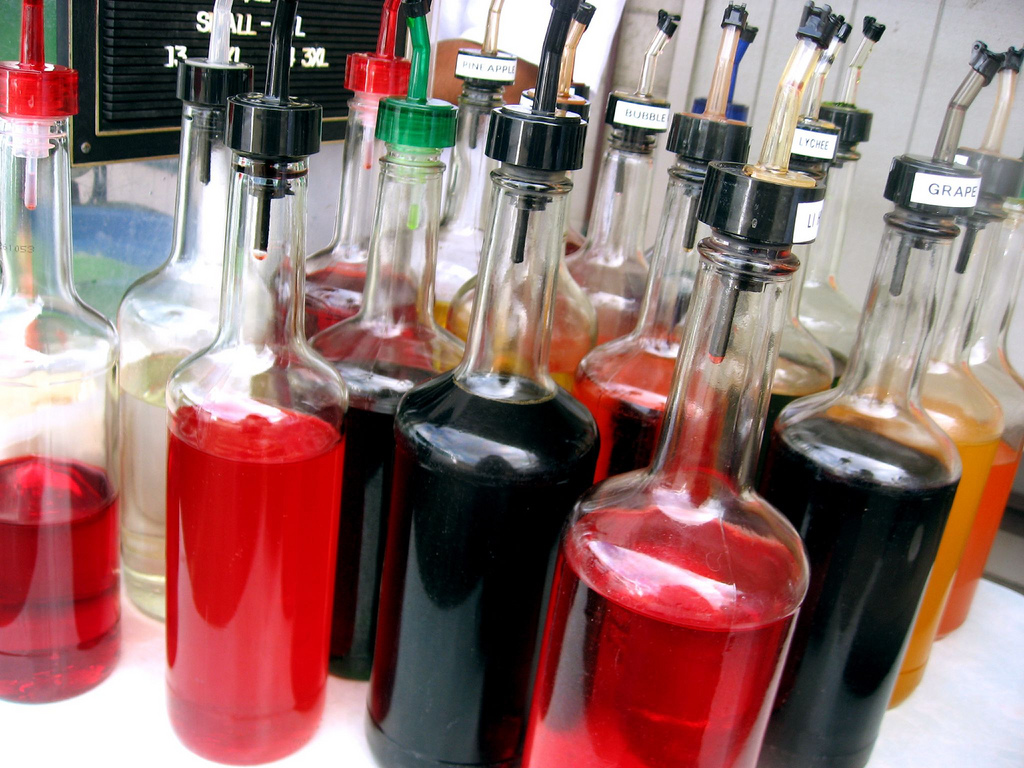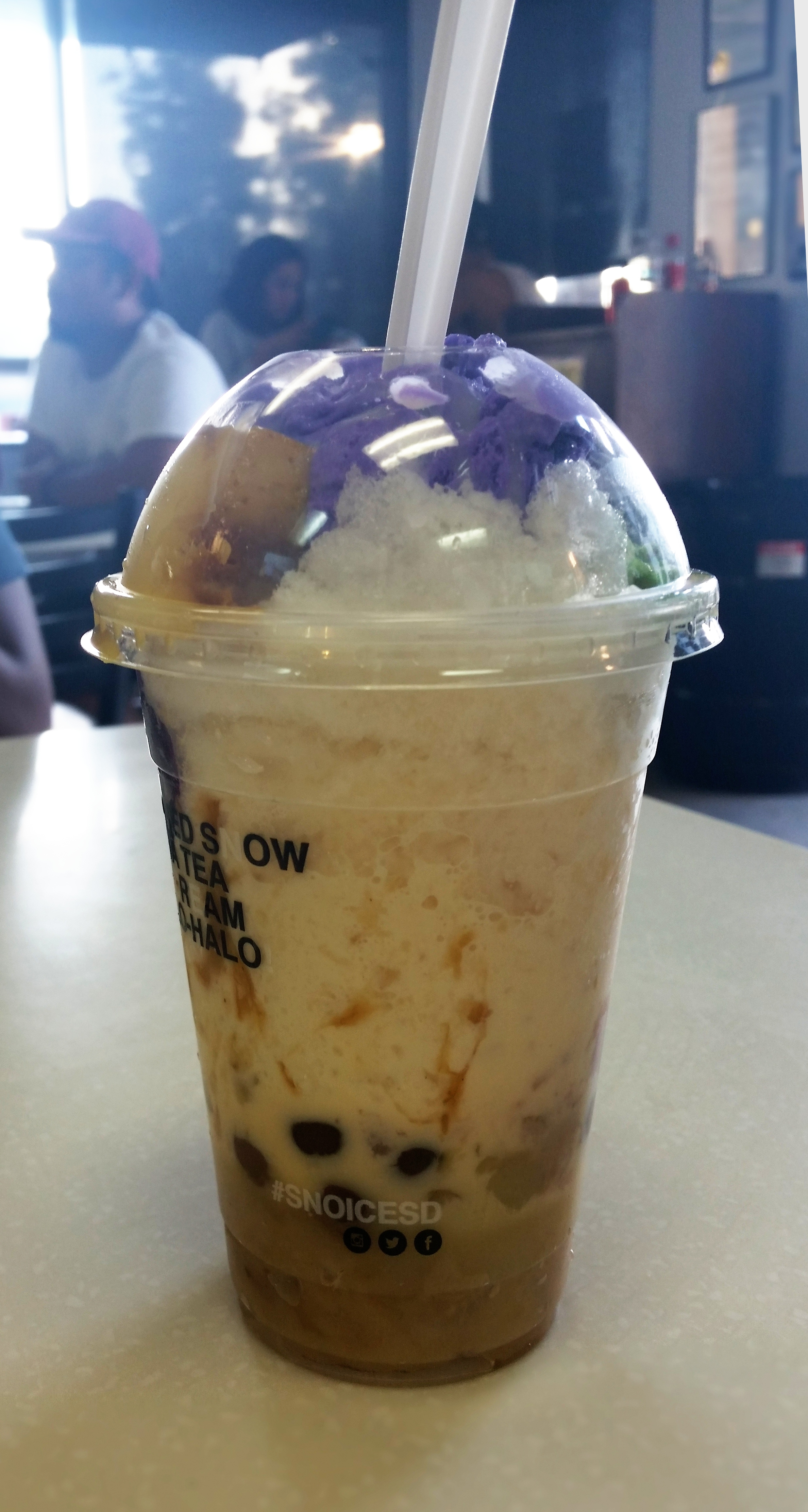|
Mangonada
Chamoyada is a sweet and spicy type of shaved ice, or ''raspado'', drink prepared with fruit and flavored with chamoy. It is a part of Mexican cuisine, and is also common in regions of the United States with significant Mexican-American populations. The drink is most commonly prepared with mango sorbet or mango-flavored shaved ice, and thus is sometimes also called a mangonada or chamango. The drink is essentially a combination of chamoy sauce, shaved ice (or ice cream or sorbet, depending on the preparation), chili powder, and fruit chunks. In certain variations, a whole fruit popsicle, or '' paleta'', is added to the drink and mixed with the shaved ice. The drinking straws served with chamoyadas often have tamarind candy on the outside. Different flavors of chamoyadas can include fruits like mango, lemon, guava, tamarind, pineapple, and strawberry. See also * Cholado * Halo-halo References Where to find chamango, the chilled Mexican fruit drink, in L.A. ''Los Angeles Times' ... [...More Info...] [...Related Items...] OR: [Wikipedia] [Google] [Baidu] |
Mexico
Mexico (Spanish: México), officially the United Mexican States, is a country in the southern portion of North America. It is bordered to the north by the United States; to the south and west by the Pacific Ocean; to the southeast by Guatemala, Belize, and the Caribbean Sea; and to the east by the Gulf of Mexico. Mexico covers ,Mexico ''''. . making it the world's 13th-largest country by are ... [...More Info...] [...Related Items...] OR: [Wikipedia] [Google] [Baidu] |
Mango
A mango is an edible stone fruit produced by the tropical tree ''Mangifera indica''. It is believed to have originated in the region between northwestern Myanmar, Bangladesh, and northeastern India. ''M. indica'' has been cultivated in South and Southeast Asia since ancient times resulting in two types of modern mango cultivars: the "Indian type" and the "Southeast Asian type". Other species in the genus ''Mangifera'' also produce edible fruits that are also called "mangoes", the majority of which are found in the Malesian ecoregion. Worldwide, there are several hundred cultivars of mango. Depending on the cultivar, mango fruit varies in size, shape, sweetness, skin color, and flesh color which may be pale yellow, gold, green, or orange. Mango is the national fruit of India, Pakistan and the Philippines, while the mango tree is the national tree of Bangladesh. Etymology The English word ''mango'' (plural "mangoes" or "mangos") originated in the 16th century from the Por ... [...More Info...] [...Related Items...] OR: [Wikipedia] [Google] [Baidu] |
Lime Juice
A lime (from French ''lime'', from Arabic ''līma'', from Persian ''līmū'', "lemon") is a citrus fruit, which is typically round, green in color, in diameter, and contains acidic juice vesicles. There are several species of citrus trees whose fruits are called limes, including the Key lime (''Citrus aurantiifolia''), Persian lime, Makrut lime, and desert lime. Limes are a rich source of vitamin C, are sour, and are often used to accent the flavours of foods and beverages. They are grown year-round. Plants with fruit called "limes" have diverse genetic origins; limes do not form a monophyletic group. Plants known as "lime" The difficulty in identifying exactly which species of fruit are called lime in different parts of the English-speaking world (and the same problem applies to synonyms in other European languages) is increased by the botanical complexity of the citrus genus itself, to which the majority of limes belong. Species of this genus hybridise readily, and it is ... [...More Info...] [...Related Items...] OR: [Wikipedia] [Google] [Baidu] |
Chili Powder
Chili powder (also spelled chile, chilli, or, alternatively, powdered chili) is the dried, pulverized fruit of one or more varieties of chili pepper, sometimes with the addition of other spices (in which case it is also sometimes known as chili powder blend or chili seasoning mix). It is used as a spice (or spice blend) to add pungency (piquancy) and flavor to culinary dishes. In American English, the spelling is usually "chili"; in British English, "chilli" (with two "l"s) is used consistently. Chili powder is used in many different cuisines, including American (particularly Tex-Mex), Chinese, Indian, Bangladeshi, Korean, Mexican, Portuguese, and Thai. A chili powder blend is the primary flavor in American chili con carne. Varieties Chili powder is sometimes known by the specific type of chili pepper used. Varieties of chili peppers used to make chili powder include Aleppo, ancho, cayenne, chipotle, chile de árbol, jalapeño, New Mexico, pasilla, and piri piri chili peppers ... [...More Info...] [...Related Items...] OR: [Wikipedia] [Google] [Baidu] |
Shaved Ice
Shaved ice is a large family of ice-based desserts made of fine shavings of ice or finely crushed ice and sweet condiments or syrups. Usually, the syrup is added after the ice has been frozen and shaved—typically at the point of sale; however, flavoring can also be added before freezing. The dessert is consumed worldwide in various forms and ways. Shaved ice can also be mixed with large quantities of liquid to produce shaved ice drinks. Many shaved ices are confused with "Italian ice", which is derived from the similar Italian dessert known as " granita". However, Italian ice, also known as "water ice", often has the flavoring (fruit juice or other ingredients, like almond) incorporated into the sugared water before it is frozen. Shaved ice—especially highly commercial shaved ice (such as that found in food chains or from street vendors)—is often flavored after the ice has been frozen and shaved. Snow cones are an example of shaved ice that is flavored after production. H ... [...More Info...] [...Related Items...] OR: [Wikipedia] [Google] [Baidu] |
Mexican Cuisine
Mexican cuisine consists of the cooking cuisines and traditions of the modern country of Mexico. Its earliest roots lie in Mesoamerican cuisine. Its ingredients and methods begin with the first agricultural communities such as the Olmec and Maya who domesticated maize, created the standard process of maize nixtamalization, and established their foodways. Successive waves of other Mesoamerican groups brought with them their own cooking methods. These included: the Teotihuacanos, Toltec, Huastec, Zapotec, Mixtec, Otomi, Purépecha, Totonac, Mazatec, Mazahua, and Nahua. With the Mexica formation of the multi-ethnic Triple Alliance (Aztec Empire), culinary foodways became infused (Aztec cuisine). Today's food staples native to the land include corn (maize), turkey, beans, squash, amaranth, chia, avocados, tomatoes, tomatillos, cacao, vanilla, agave, spirulina, sweet potato, cactus, and chili pepper. Its history over the centuries has resulted in regional cuisines based on ... [...More Info...] [...Related Items...] OR: [Wikipedia] [Google] [Baidu] |
Ice Pop
An ice pop is a liquid-based frozen snack on a stick. Unlike ice cream or sorbet, which are whipped while freezing to prevent ice crystal formation, an ice pop is "quiescently" frozen—frozen while at rest—and becomes a solid block of ice. The stick is used as a handle to hold it. Without a stick, the frozen product would be a freezie. An ice pop is also referred to as a popsicle in Canada and the United States, flash in Algeria, paleta in Mexico, the Southwestern United States and parts of Latin America, ice lolly in the United Kingdom (the term ''ice pop'' refers to a freezie in the United Kingdom), ice drop in the Philippines, ice gola in India, ice candy in India and Japan, and kisko in the Caribbean. The term icy pole is often used in Australia, but is a brand name for a specific type, so ice block is also used. History As far back as 1872, two men, doing business as Ross and Robbins, sold a frozen-fruit confection on a stick, which they called the Hokey-Pokey. Franc ... [...More Info...] [...Related Items...] OR: [Wikipedia] [Google] [Baidu] |
Tamarind
Tamarind (''Tamarindus indica'') is a Legume, leguminous tree bearing edible fruit that is probably indigenous to tropical Africa. The genus ''Tamarindus'' is monotypic taxon, monotypic, meaning that it contains only this species. It belongs to the family Fabaceae. The tamarind tree produces brown, pod-like fruits that contain a sweet, tangy pulp, which is used in cuisines around the world. The pulp is also used in traditional medicine and as a metal polish. The tree's wood can be used for woodworking and Tamarind#Tamarind seed oil and kernel powder, tamarind seed oil can be extracted from the seeds. Tamarind's tender young leaves are used in Indian cuisine, Indian and Filipino cuisine. Because tamarind has multiple uses, it is cultivated around the world in Tropical zone, tropical and Subtropics, subtropical zones. Description The tamarind is a long-lived, medium-growth tree, which attains a maximum crown (botany), crown height of . The crown has an irregular, vase-shaped ... [...More Info...] [...Related Items...] OR: [Wikipedia] [Google] [Baidu] |
Cholado
{{Colombia-stub ...
Cholado or Raspao is an icy beverage with fresh fruit and sweetened condensed milk traditional from Jamundí, in the region of Valle del Cauca, Colombia. It is made from crushed ice or shaved ice, chopped fruit, condensed milk, fruit syrup, and served with a wafer cookie, sometimes topped with whipped cream and shredded cheese. The common fruits that are used in the preparation include banana, apple, kiwi, strawberry, papaya, pineapple, mango, and soursop. See also *Colombian cuisine * Granizado *Halo halo *Chamoyada References Cholado Cholado Cholado or Raspao is an icy beverage with fresh fruit and sweetened condensed milk traditional from Jamundí, in the region of Valle del Cauca, Colombia. It is made from crushed ice or shaved ice, chopped fruit, condensed milk, fruit syrup, and ... [...More Info...] [...Related Items...] OR: [Wikipedia] [Google] [Baidu] |
Halo-halo
Halo-halo, correctly spelled ''haluhalo'', Tagalog for "mixed" (the more common spelling instead literally equating to "mix-mix") is a popular cold dessert in the Philippines made up of crushed ice, evaporated milk or coconut milk, and various ingredients including ube jam (ube halaya), sweetened kidney or garbanzo beans, coconut strips, sago, ''gulaman'' ( agar), pinipig, boiled taro or soft yams in cubes, flan, slices or portions of fruit preserves and other root crop preserves. The dessert is topped with a scoop of ube ice cream. It is usually prepared in a tall clear glass and served with a long spoon. ''Halo-halo'' is considered to be the unofficial national dessert of the Philippines. The term "''halo-halo''" is supposed to mean "mixed" in English because the dessert is meant to be mixed before being consumed. Although strictly grammatically incorrect, this spelling has come to describe any object or situation composed of a similar, colorful combination of ingredient ... [...More Info...] [...Related Items...] OR: [Wikipedia] [Google] [Baidu] |
The Charlotte Observer
''The Charlotte Observer'' is an American English-language newspaper serving Charlotte, North Carolina, and its metro area. The Observer was founded in 1886. As of 2020, it has the second-largest circulation of any newspaper in the Carolinas. It is owned by Chatham Asset Management. Overview ''The Observer'' primarily serves Charlotte and Mecklenburg County and the surrounding counties of Iredell, Cabarrus, Union, Lancaster, York, Gaston, Catawba, and Lincoln. Home delivery service in outlying counties has declined in recent years, with delivery times growing later as the paper has outsourced circulation services outside the primary Charlotte area. Circulation at ''The Charlotte Observer'' has been declining for many years. The period of May 2011 showed that ''Charlotte Observer'' circulation totaled 155,497 daily and 212,318 Sunday. 2017 Print Circulation Daily: 69,987 and Sunday: 106,434. The newspaper has an online presence and its staff also oversees a NASCAR news we ... [...More Info...] [...Related Items...] OR: [Wikipedia] [Google] [Baidu] |






